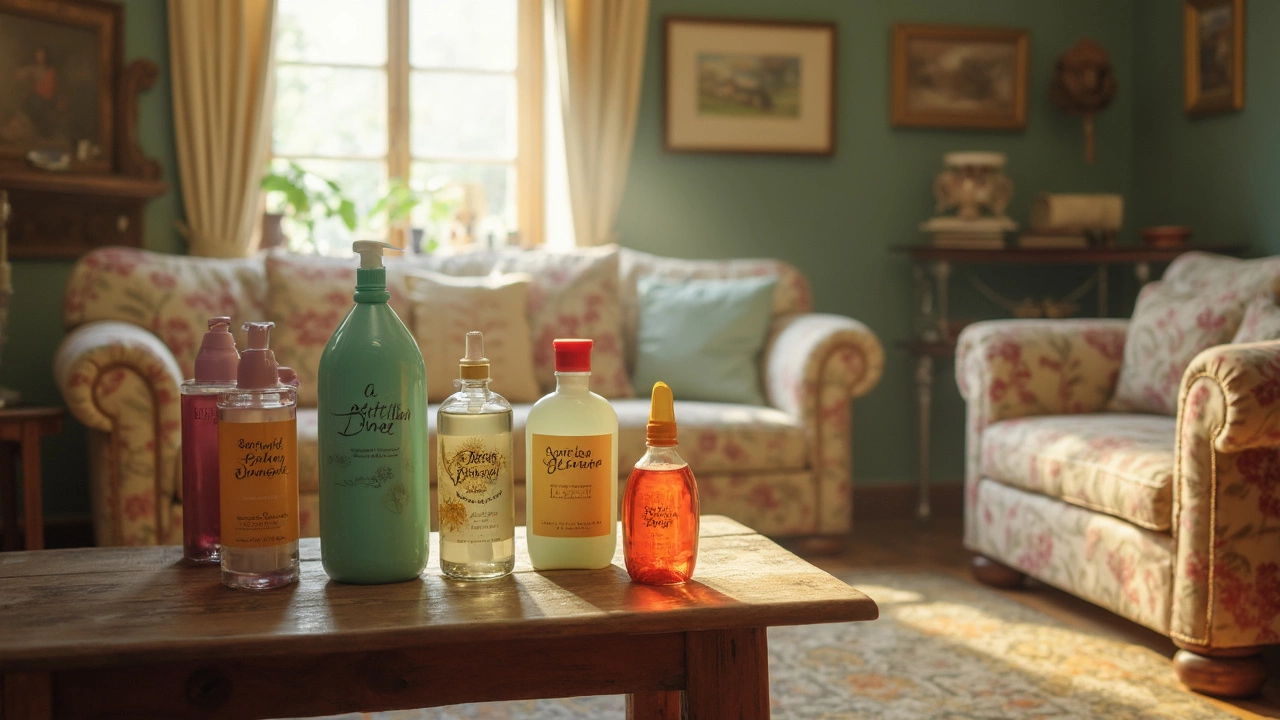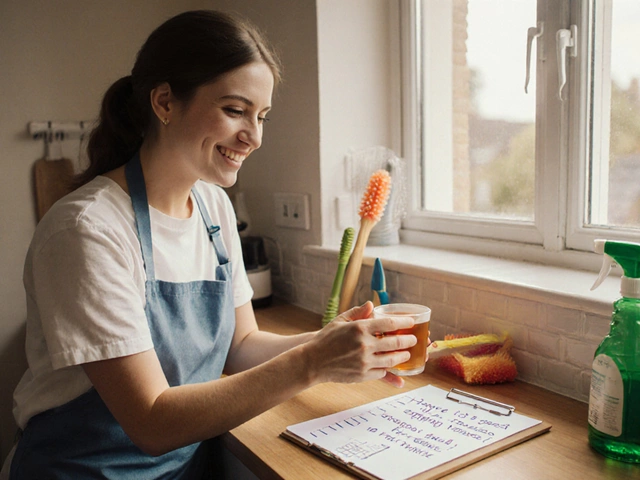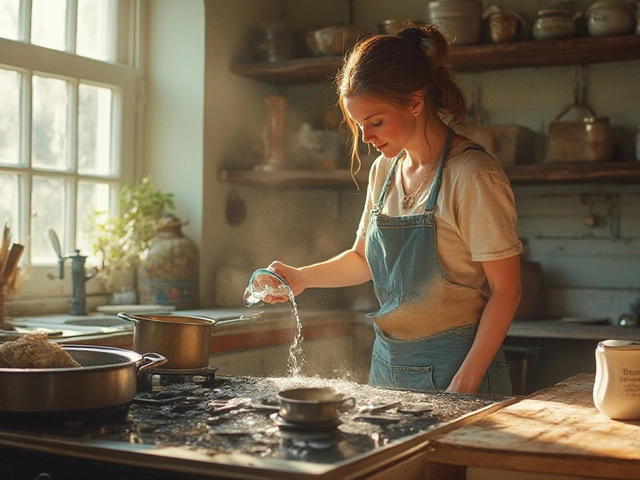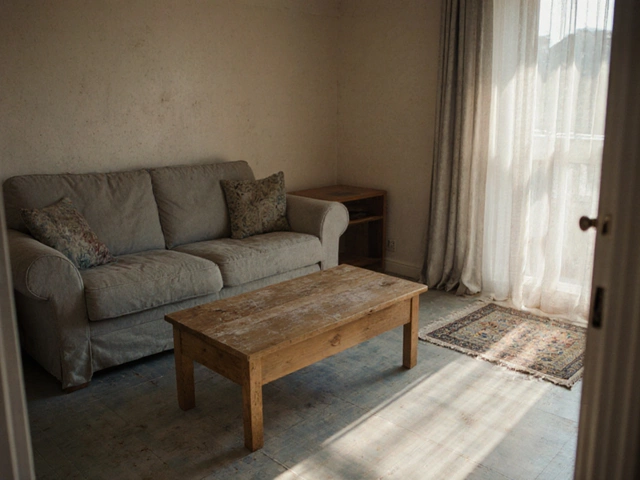So, you’ve got a fancy couch or maybe those elegant dining room chairs, but over time, they start looking a little worse for wear. Ever wonder what the best way to breathe new life into them is? Well, picking the right detergent for your upholstery is a great start.
Not all fabrics are created equal; some are delicate while others are more rugged. Understanding what you're dealing with is half the battle won. Once you know your fabric type, discovering which detergent is right becomes much easier.
It’s not just about detergent either—dealing with specific, pesky stains can be another challenge. Whether it’s a splash of red wine or pesky pet fur, learning how to tackle these with the right approach can make all the difference. The next step is figuring out what ingredients to look for in detergents that won't damage the fabric but will still get the job done effectively.
In this guide, we’ll dive deeper into choosing and using the best products, alongside some handy DIY solutions and expert tips. With a few tweaks and careful choices, your upholstery can stay fresh and stain-free, making your home feel brand new again.
- Understanding Upholstery Fabrics
- Common Stains and How to Handle Them
- Choosing the Right Detergent
- DIY Cleaning Solutions
- Pro Tips for Upholstery Care
- Mistakes to Avoid
Understanding Upholstery Fabrics
Before diving into what detergents to use, it's super important to know what kind of fabric you're dealing with. Upholstery fabrics vary widely, and each has its own cleaning quirks.
A big difference is between natural and synthetic fabrics. Natural fabrics like cotton, wool, and leather can be sensitive to moisture and certain chemicals. They might need more gentle care. Upholstery cleaning for these often requires specific products designed to protect the fabric while lifting stains.
On the other hand, synthetics like polyester and nylon are generally more resistant but can still be tricky with oily stains. These fabrics, often found in family-friendly furniture, are usually designed to withstand a bit more wear and tear.
Sometimes, your furniture might have a blend of materials which adds to the complexity. It's a good idea to check any tags or labels on your furniture for specific care instructions. These tags might have cleaning codes like 'W' for water-based cleaner, 'S' for solvent-based cleaner, or 'SW' when both are safe, so keep an eye out for that!
To make things easier, here are the types you might come across:
- Cotton: Comfortable and breathable but known to wrinkle and soil easily. Requires mild detergents.
- Leather: Durable but sensitive to heat and sunlight. Needs special leather cleaners and conditioners.
- Polyester: Cheap to produce and has decent stain resistance but can melt if overheated.
- Linen: Strong and breathable but prone to shrinkage, so dry cleaning is often recommended.
Knowing what you're working with is key to picking out the best detergent to keep your furniture looking sharp. Understanding your fabric types can help you quickly narrow down cleaning methods and avoid mishaps.
Common Stains and How to Handle Them
Upholstery is like a magnet for all sorts of stains. It's one of those things that makes enjoying food and drinks on the couch a risky business. But let's break down some of the culprits and how to deal with them.
Red Wine is a classic offender. First, blot the stain with a clean cloth, never rub—that just makes it worse. Then, sprinkle some salt on the spot to soak up moisture. After that, gently dab with a bit of water mixed with a few drops of dish soap. Always test on a hidden spot first.
For coffee and tea, start by blotting up as much as you can. Mix one tablespoon of liquid laundry detergent and one cup of water, then gently apply using a clean cloth. Coffee stains can be stubborn, so you might need a couple of rounds.
Grease stains from some tasty snacks can be tricky too. Your best bet is to use some baking soda or cornstarch to absorb the oil first. Just sprinkle it on, let it sit for about 15 minutes, then brush it off. After that, use a mild detergent solution to clean up the residue.
Spilled a bit of makeup on your couch? No worries. For cosmetics like foundation, shaving cream can do wonders. Dab a small amount on the stain, let it sit for a few minutes, then blot it away with a damp cloth.
Finally, we've got pet issues. Whether it's mud or unfortunate accidents, you want to act fast. Blot up as much as you can and use an enzyme cleaner designed specifically for pet stains. These help break down the proteins and prevent future smells.
- Always blot, never rub, to prevent spreading.
- Test all cleaning solutions on a hidden patch of fabric first.
- Use cool water with detergents to avoid setting the stains.
A quick response is your best friend when it comes to stain removal. The longer a stain sits, the harder it is to remove, so don’t let procrastination get in the way. Your upholstery deserves the best cleaning regime so it looks fresh and inviting.
Choosing the Right Detergent
When it comes to keeping your furniture looking fresh, picking the right detergent can make all the difference. But with so many products out there, how do you choose? Let’s break it down.
The first thing to think about is the type of fabric you’re cleaning. Always check the care tags on your upholstery. Some fabrics, like silk or velvet, might need special handling and detergents specifically formulated for delicate materials.
A good rule of thumb is to go for a detergent that’s free from harsh chemicals. Ingredients like bleach or phosphates can break down fibers, causing damage over time. Look for labels that say “safe for all fabrics” or “gentle on upholstery.”
If eco-friendly options are your jam, there are plenty available today. Products made with natural ingredients not only help reduce environmental impact but are often just as effective on common stains.
Let's take a look at some recommended types of detergent:
- Liquid Detergents: Great for spot cleaning. They penetrate fabrics easily, making them effective for tackling tough stains.
- Powder Detergents: These can be a little more abrasive, but they’re fantastic for bigger cleaning jobs when dissolved properly.
- Pods: Convenient and mess-free. Just make sure they're fully dissolved in water before use to avoid any sticky residue.
And for those who love a bit of DIY action, mixing baking soda with a mild detergent can create an awesome homemade cleaning solution for unexpected spills.
Investing time in choosing the right upholstery cleaning products ultimately saves cash and keeps your furniture in top-notch condition. Remember, the goal is to clean, not damage!
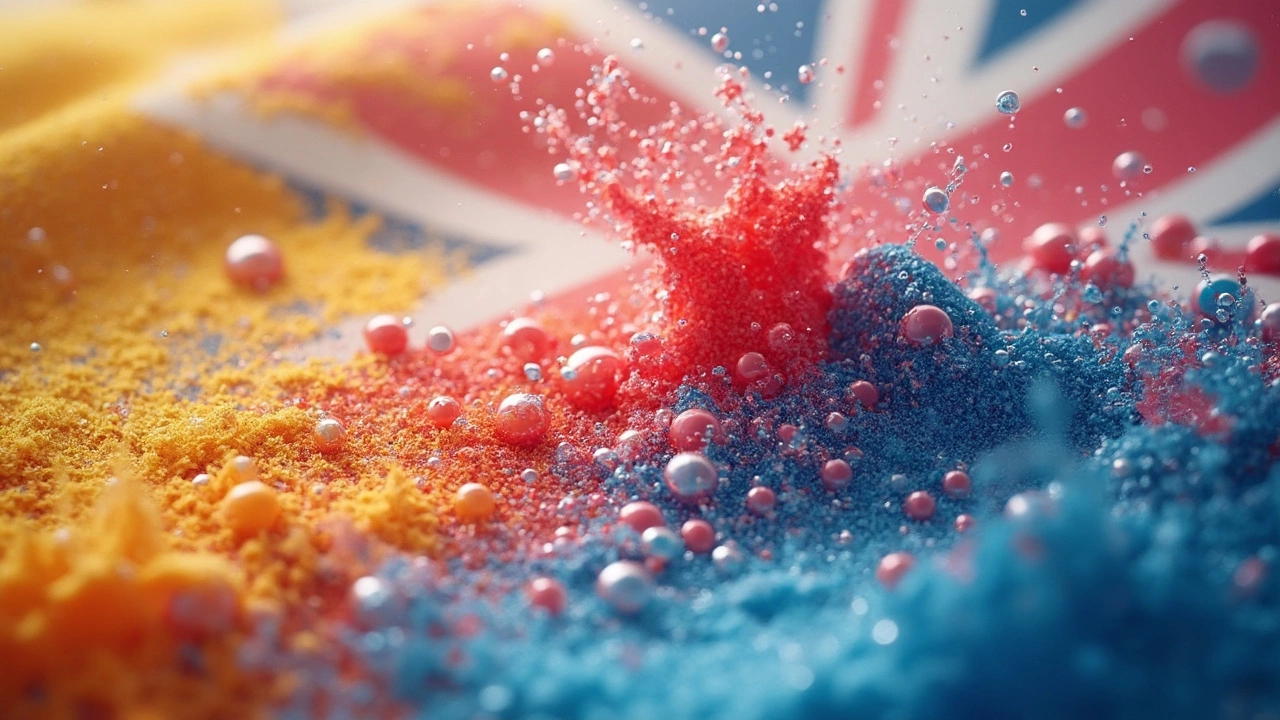
DIY Cleaning Solutions
Alright, let's talk about giving those tired sofas and chairs a makeover without shelling out big bucks on fancy solutions. There’s a whole bunch of stuff right in your kitchen that can work wonders on upholstery.
First up, for those light-colored fabrics that seem to attract stains like metal to magnets, a trusty mixture of baking soda and water can be your secret weapon. Just mix equal parts to make a paste, smear it on the stain, let it sit, and scrub it gently with a soft brush. Rinse it out with a damp cloth and you're good to go.
"When it comes to fabric care, staying ahead of those inevitable spills with quick action and gentle cleaning solutions is key," says Deborah Bailey, a renowned fabric care specialist.
If you're dealing with stubborn greasy messes, white vinegar is your go-to hero. It cuts through grease like a hot knife through butter. Make a solution with one part vinegar and three parts water, spritz it onto the stain, and dab—not rub—it with a clean cloth.
Here’s another nifty trick for those of us battling tougher spots. Combining dish soap with hydrogen peroxide can tackle a lot of unpleasantness. Just mix one tablespoon of dish soap with two tablespoons of peroxide and apply it carefully to the stain. Make sure to rinse well; no one likes a soapy surprise later!
And let's not forget the power of steam cleaning. If you've got a handheld steamer, it can be just the thing to lift out deep-seated dirt from your upholstery. Plus, it gives your furniture a fresh-as-new look without involving a ton of chemicals.
Here's a quick look at some DIY ingredients and their uses:
| Ingredient | Use |
|---|---|
| Baking Soda | Stain lifting for light fabrics |
| White Vinegar | Grease removal |
| Dish Soap & Hydrogen Peroxide | Tough stain removal |
With all these easy options, you can keep your upholstery looking its best without much fuss. And remember, always test a small, hidden area first to make sure nothing goes haywire!
Pro Tips for Upholstery Care
Your furniture deserves the best care so it can last longer and look great. Here’s how you can keep your upholstery in top shape!
Regular Vacuuming: It’s like dusting your furniture. Using a vacuum with a brush attachment can help lift dirt and crumbs hiding in those sneaky corners and seams. This is your first line of defense against grime.
Tackle Stains Immediately: Found a spill? Don’t wait! Act fast with some warm water and mild detergent. Blot, don’t rub—the rubbing action can force the stain deeper into the fabric.
Use the Right Tools: Investing in a good spot cleaner can save a lot of trouble down the road. A steam cleaner specifically for upholstery can also freshen up your entire sofa, reaching deep into the fabric to remove dirt.
Rotate Cushions: If your furniture has removable cushions, rotate them regularly. This ensures even wear and prevents some cushions from looking more squashed than others.
Test New Products: Before trying out a new cleaner, do a little test on a hidden area of your upholstery. This trick helps avoid nasty surprises and ensures the cleaner won’t harm your fabric.
Avoid Direct Sunlight: Just like our skin, fabrics don’t fare well under too much direct sunlight. It can fade colors and weaken fibers. Using throws or covers can help protect your upholstery from UV damage.
Here’s a quick snapshot showing how often you might tackle some of these tips:
| Task | Frequency |
|---|---|
| Vacuum | Weekly |
| Rotate Cushions | Monthly |
| Deep Clean | Bi-Annually |
| Sunlight Protection | Continuous |
With these simple yet effective tips, keeping your upholstery in great condition isn’t just possible—it’s easy. Consistency is key, so make these a part of your cleaning routine and enjoy your furniture looking vibrant and welcoming for years.
Mistakes to Avoid
When it comes to upholstery cleaning, it's easy to make a few common mistakes that could end up damaging your fabric or just not being effective. Let’s go over a few pitfalls you definitely want to avoid:
Skipping the Test Patch: Before using any detergent on your upholstery, always test it in an inconspicuous spot. This little step can save your entire couch from a big disaster. Some detergents might discolor or weaken the fabric, so better safe than sorry!
Using Too Much Detergent: More isn’t always better. Loading up on detergent can lead to residue build-up, which not only attracts more dirt but can also leave unsightly marks. Stick to the recommended amount, and you'll avoid turning your cleaning project into a sticky mess.
Ignoring Fabric Care Labels: Every piece of upholstery comes with a care tag, and those letters and symbols aren’t just for show. Failing to follow these instructions can result in ruined fabric. Always check whether your upholstery can handle a water-based detergent or if a special solvent is needed.
- W: Water-based cleaning agents are okay.
- S: Solvent-based cleaners only—avoid water.
- WS: Either is fine, but test first.
- X: Don’t clean—it’s a job for professionals.
Rubbing Stains Vigorously: When you're dealing with a fresh spill, it's tempting to scrub it out. Bad move. Rubbing can push the stain deeper into the fabric and spread it around. Instead, blot the stain gently with a clean, damp cloth and follow with the right cleaning agent.
Forgetting to Rinse: Once you’ve cleaned up with the detergent, make sure you rinse it out thoroughly. Leaving any cleaner behind can lead to mild irritation or attract more dirt. Use a damp cloth to dab away any residue and allow the fabric to dry completely.
Avoid these slip-ups, and you'll keep your upholstery in top-notch condition without any added drama. Who knew a clean sofa could be so satisfying?
